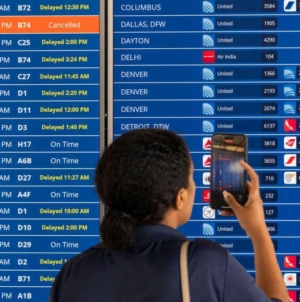-
Cookie Recall as ‘Serious’ Health Warning Issued - 18 mins ago
-
Chargers WR, Former Top-10 NFL Draft Pick Mike Williams Retiring at Age 30 - 32 mins ago
-
Chargers WR, Former Top-10 NFL Draft Pick Mike Williams Retiring at Age 30 - 32 mins ago
-
Was Stephen Colbert’s ‘Late Show’ Canceled Because of Trump? What to Know - 59 mins ago
-
Sweden vs. England Full Penalties Women's Euro Quarterfinals | FOX Soccer - about 1 hour ago
-
3 killed in strike on the last Catholic church in Gaza; a friend of Pope Francis is among the injured - about 1 hour ago
-
Hungary Seeks to Stay Leading European Hub for Chinese Investment - about 1 hour ago
-
Trump wants to hire 10,000 new ICE agents. Is that goal doable? - 2 hours ago
-
Golden Retriever Realizes He’s on Camping Trip, His Face Says It All - 2 hours ago
-
Flight cancellations are surging this summer. These airports have been hit the hardest. - 2 hours ago
Here’s your potential tax cut in 2026 from the One Big Beautiful Bill Act
Millions of taxpayers could see a lower tax bill next year due to the so-called “big, beautiful bill” that was signed into law on July 4 by President Trump, with a recent analysis finding that every income group will see some savings.
On average, taxpayers will save about $2,900 per household in 2026, according to the analysis from the Tax Policy Center, a nonpartisan think tank focused on taxes. But higher-income Americans are more likely to see a bigger relative boost than lower-income households, their analysis found.
The new law extends the tax cuts in President Trump’s 2017 Tax Cuts and Jobs Act, with many of those provisions otherwise slated to expire at year-end. But the legislation also adds a bevy of new tax breaks, ranging from eliminating taxes on overtime and tips to lifting the state and local taxes deduction from $10,000 to $40,000.
About $6 of every $10 in tax breaks will go to the top 20% of households, or people who earn incomes of about $217,000 or more, the Tax Policy Center analysis found.
“Average tax cuts are generally larger as a percentage of after-tax income for higher income households than for lower income households,” it noted.
For instance, the typical household in the bottom quintile — those earning up to $34,600 per year — will save an average of about $150 in tax payments next year, or 0.8% of their income.
But those in the top quintile, or who earn $217,101 or more, will save an average of $12,540 next year, or 2.5% of their incomes, the analysis found.
To be sure, an individual’s tax savings next year will depend on a number of variables, such as their number of children, which allows people to claim the Child Tax Credit, or whether they can tap one of the new tax breaks, such as the elimination of taxes on some tipped income.
Source link





























